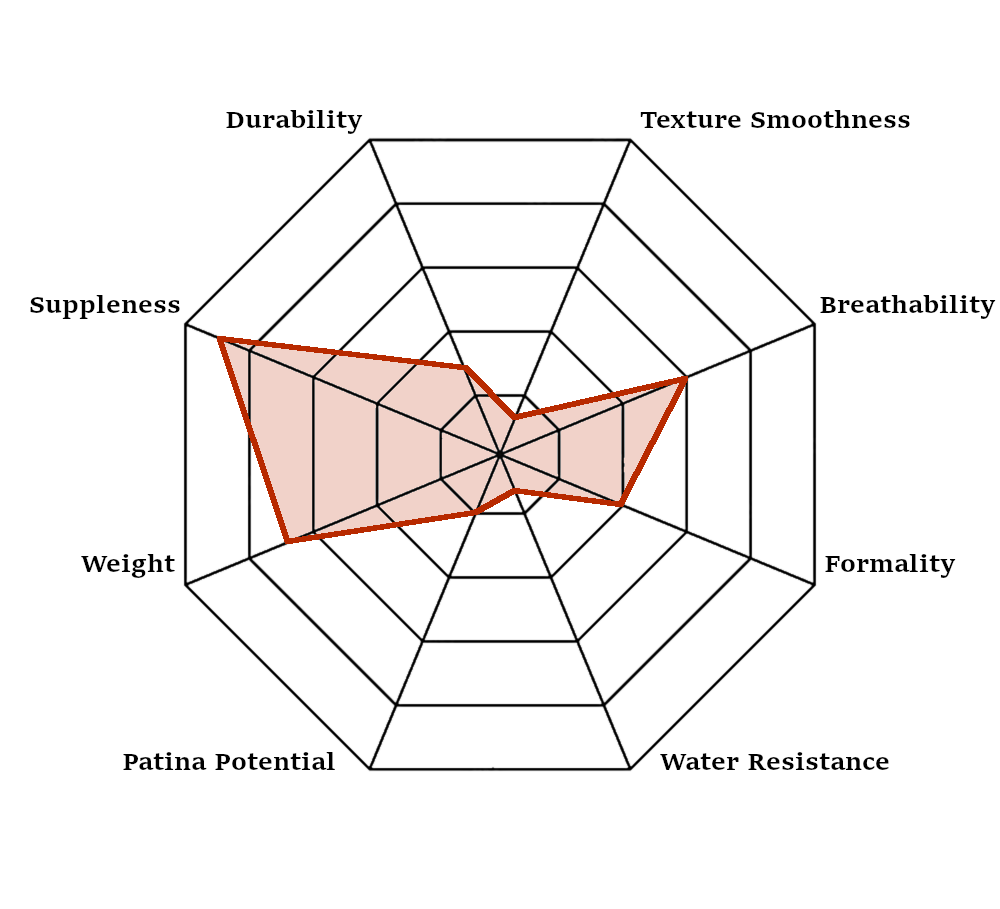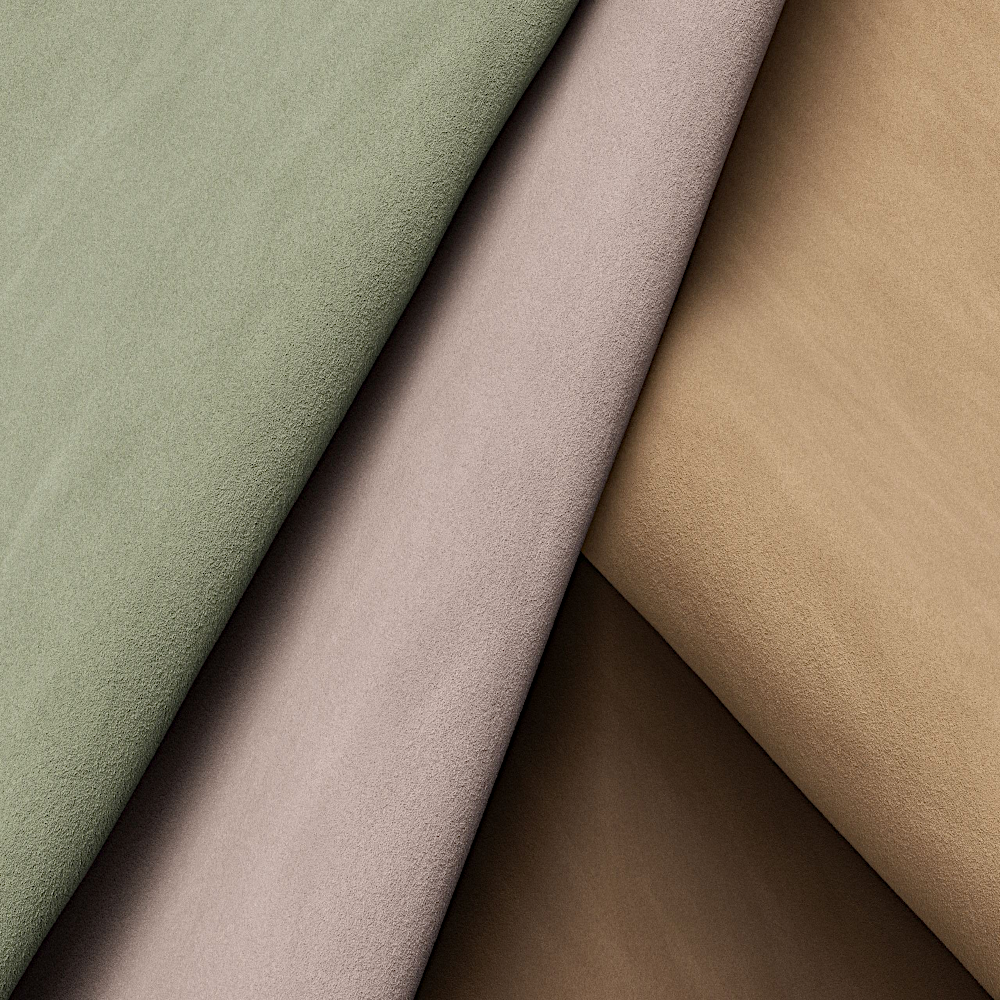
Suede
Suede is created from the inner split of a hide (often cow, lamb, or goat), meaning the strong outer grain layer is removed. The surface is then heavily sanded and buffed to create its characteristic soft, fuzzy, napped texture.
Suede is known for its velvety suppleness (9/10) and distinctly non-smooth, napped texture (Texture Smoothness 1/10). It's relatively lightweight (Weight 7/10) with decent breathability (6/10). However, it ranks low in durability (3/10) as the nap is prone to matting, staining, and damage. It has very poor water resistance (1/10) and does not develop patina (Patina Potential 2/10). Its typically casual nature results in lower formality (4/10).
Suede's soft texture and casual aesthetic make it popular for specific bespoke items. It's commonly used for casual jackets (like truckers or bombers), vests, skirts, chaps, loafers, boots (like chukkas), and accessories like bags and gloves, often favored for its unique look and feel in drier conditions.
Leather Characteristics Legend
Durability: Measures the leather's resistance to physical damage like scratches, scuffs, and tears. A higher score indicates a tougher, more wear-resistant hide suitable for high-wear garments.
Suppleness: Refers to the leather's softness, flexibility, and ease of movement. A higher score means a softer, more pliable leather that requires less breaking-in and often feels more comfortable initially.
Weight: Indicates the relative thickness and density of the leather. A higher score suggests a lighter, thinner leather (like lambskin), often preferred for less structured items or warmer weather. A lower score indicates a heavier, thicker hide, providing more structure and warmth.
Patina Potential: Rates the leather's tendency to develop a desirable, characterful appearance (patina) over time with use and exposure. A higher score signifies leathers (like full-grain) that age beautifully, developing depth in color and sheen.
Water Resistance: Measures the leather's natural or enhanced ability to repel water. A higher score indicates better protection against moisture, often influenced by the tanning process and applied finishes.
Formality: Assesses the leather's suitability for formal versus casual attire. Higher scores are associated with smooth, sleek leathers often used in dressier jackets or accessories. Lower scores lean towards more rugged or textured leathers common in casual wear.
Breathability: Gauges the leather's ability to allow air and moisture vapor (perspiration) to pass through. Higher scores mean better ventilation, although leather is generally less breathable than most fabrics.
Texture Smoothness: Describes the tactile and visual fineness of the leather's surface. A higher score indicates a very smooth, fine-grained surface. Lower scores represent a more pronounced grain, pebbled texture, or a napped surface like suede or nubuck.







